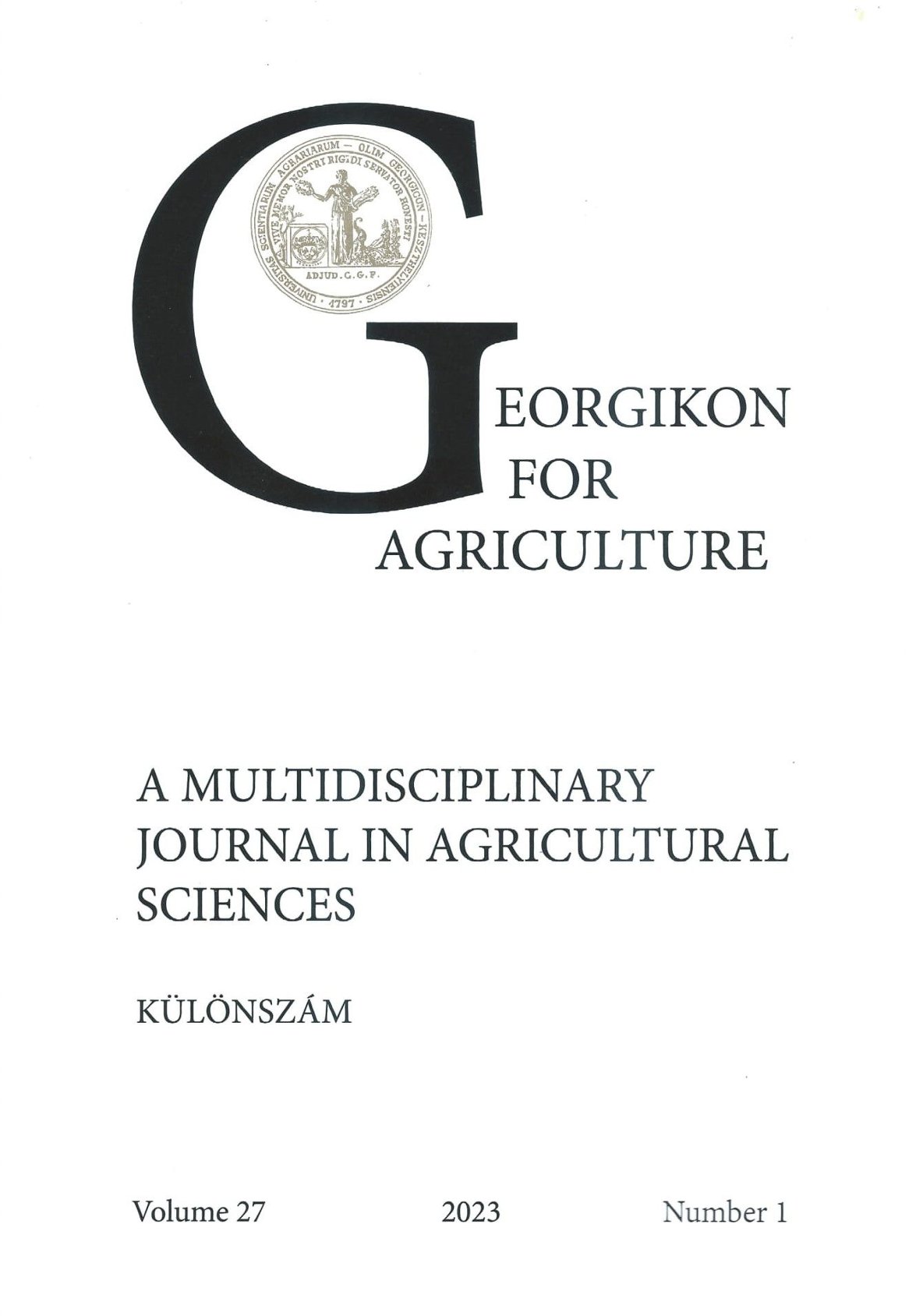Káposztafélék xantomonászos feketeerűség betegségét okozó kórokozó elleni védekezési lehetőségek értékelése szabadföldön
Keywords:
black rot, cabbages, Xanthomonas campestris pv. campestris, environmental protectionAbstract
Xanthomonas campestris pv. campestris is one of the most important pathogens of brassicas. The bacterium causes typical 'V' shaped spots on the leaf, which are initially watery and yellowish colored, then in time became necrotic. Prevention is the most effective way to control this pathogen, so the choice of tolerant varieties is essential for successful cultivation. In our study, we evaluated the susceptibility of 9 cultivars and the effect of different natural substances (lemon juice, cinnamon, orange oil). The evaluation was based on the number of leaf symptoms. Only the infected control differed significantly from the treatments with lemon juice and cinnamon at 0,025 % concentration. The Bejo '3415' variety was significantly different from the other tested varieties except. However, it is justified to repeat the experiment for several years to get an accurate result of the susceptibility of the varieties to the pathogen.
References
Akhtar, A. M. 1989. Xanthomonas campestris pv. campestris causing black rot in cabbage. Pakistan Journal of Agricultural Research 10. 311-313.
Atit, M. and Ranjan, N. 2015. Pathogenecity test by using different inoculation methods on Xanthomonas campestris pv. campestris caused of black rot of cabbage. International Journal of Research in Applied 3. 53-58.
Ciavareli, G., Alves, L. E., Borges, R., Fabiano, P., Perinam, J. and Magela de Souza, R. 2012. Antibacterial activity of essential oils on Xanthomonas vesicatoria and control of bacterial spot in tomato. SciELO - Scientific Electronic Library Online 1-10.
Dowson, W. J. 1939. On the systematic position and generic names of the Gram-negative bacterial plant pathogens. Zentralbl Bacterial Parasite Infektionskr. Hyg. Abt. II. 100. 177-193.
Forgács M. 2022. A fejes káposzta jelentősebb kórokozói elleni készítmények in vitro vizsgálata. Magyar Agrár- és Élettudományi Egyetem, Budai Campus, Növényvédelmi Intézet, Növénykórtani Tanszék, Diplomamunka
Frassinetti, S., Caltavuturo, L., Cini, M., Della, C., Croce, M. and Maserti, B. E. 2011. Antibacterial and antioxidant activity of essential oils from Citrus spp. Journal of Essential Oil Research 23(1). 27-31.
László Gy. 2011. Narancsolaj - egy sokoldalú eszköz az ökológiai növénytermesztésben. Biokultúra 22(3). 8-9.
Papaianni, M., Paris, D., Woo, S. L., Fulgione, A., Rigano, M. M., Parrilli, E., M. Tutino, L., Marra, R., Manganiello, G., Casillo, A., Limone, A., Zoina, A., Motta, A., Lorito, M. and Capparelli, R. 2020. Plant dynamic metabolic response to bacteriophage treatment after Xanthomonas campestris pv. campestris infection. Frontiers in Microbiology 11. 732.
Pammel, L. H. 1895. Bacteriosis of rutabaga (Bacillus campestris n. sp.). Bulletin of the Iowa State College Agricultural Experiment Station 27. 130-134.
Popović, T., Milićević, Z., Oro, V., Kosti, I., Radović, V., Jelušić, A. and Krnjajić, S. 2018. A Preliminary study of antibacterial activity of thirty essential oils against several important plant pathogenic bacteria. Journal Pesticides and Phytomedicine 33(3-4). 185-195.
Downloads
Published
Issue
Section
License
Copyright (c) 2023 Czina Miklós István, Fodor Attila, Végh Anita

This work is licensed under a Creative Commons Attribution-NonCommercial-NoDerivatives 4.0 International License.
Cikkre a Creative Commons 4.0 standard licenc alábbi típusa vonatkozik: CC-BY-NC-ND-4.0. Ennek értelmében a mű szabadon másolható, terjeszthető, bemutatható és előadható, azonban nem használható fel kereskedelmi célokra (NC), továbbá nem módosítható és nem készíthető belőle átdolgozás, származékos mű (ND). A licenc alapján a szerző vagy a jogosult által meghatározott módon fel kell tüntetni a szerző nevét és a szerzői mű címét (BY).




